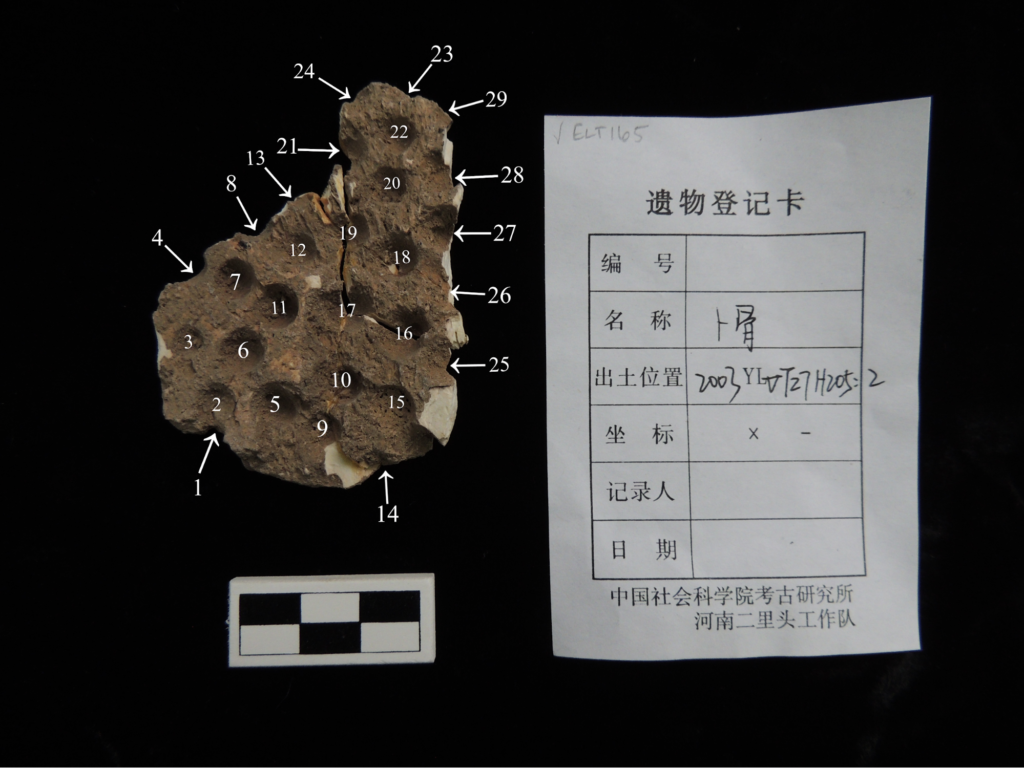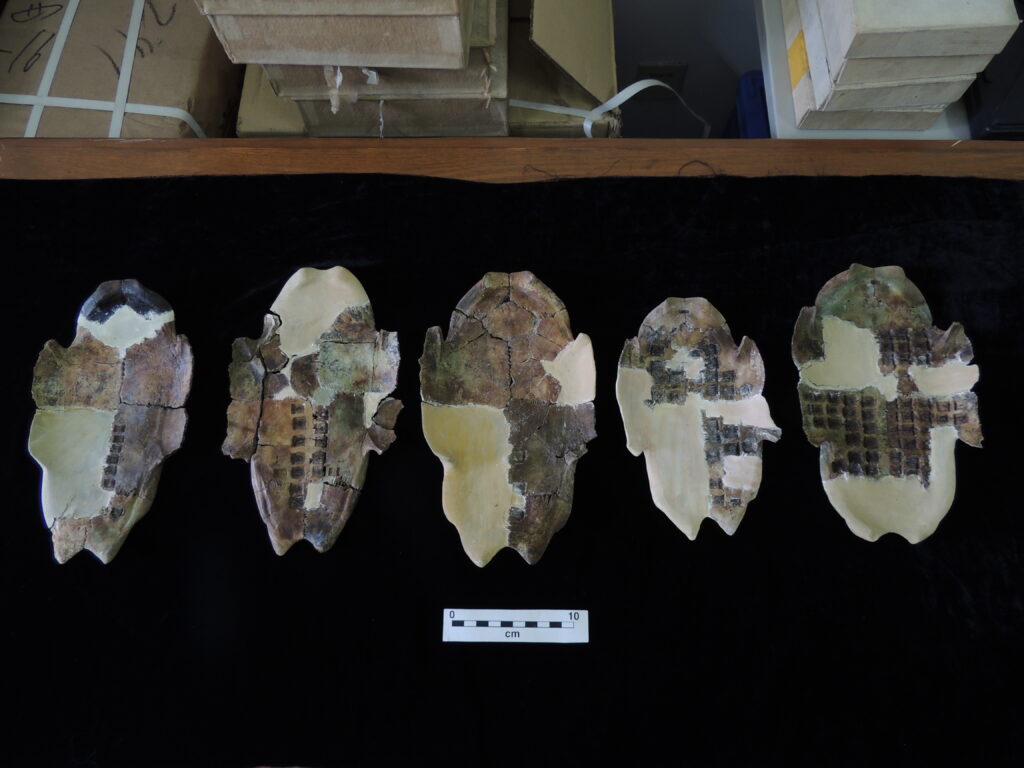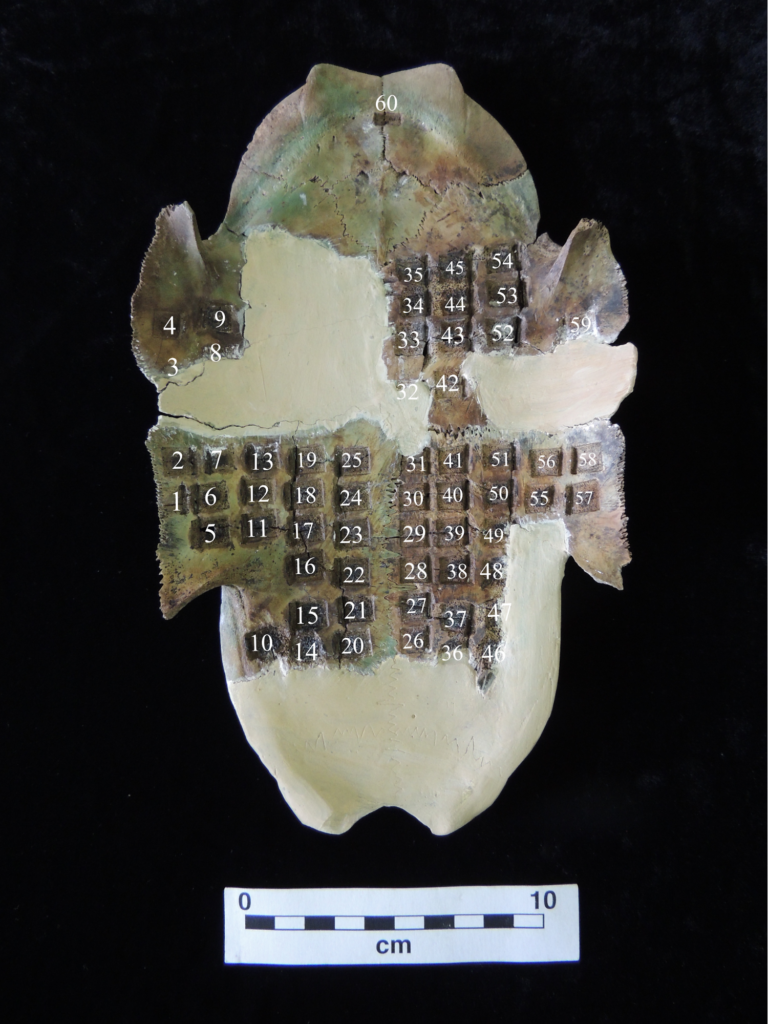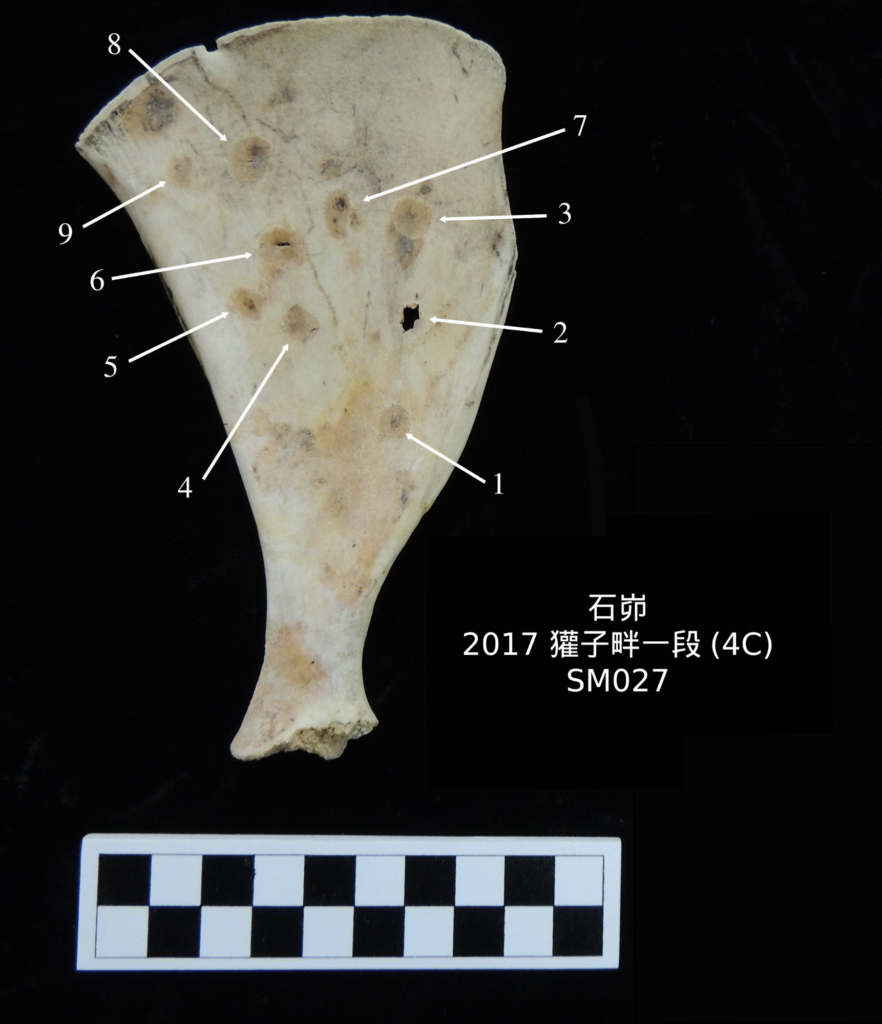Archaeologists normally spend our summers excavating. Due to COVID-19, several Wesleyan students and archaeology faculty members spent this summer digging into data!
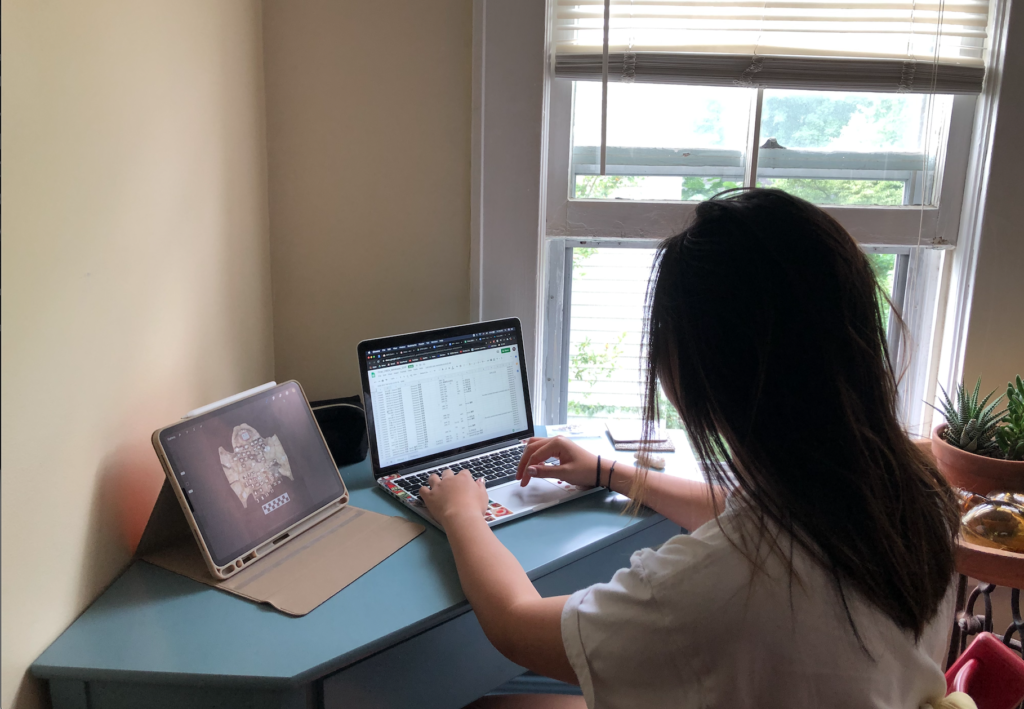
Audrey Lam (class of 2020) and Nina Hirai (class of 2023) worked with Prof. Katherine Brunson (Archaeology Program) to label photos and update the multi-language database for the Oracle Bones in East Asia project. Oracle bones are a special type of bone artifact used for divination rituals. Oracle bones are found at many East Asian archaeological sites, but information about the types of animals used and the methods for carving and burning the bones have not been systematically recorded. The Oracle Bones in East Asia project aims to document spatial and temporal trends in the production and use of oracle bones. Our work this summer to update the database will make it possible to compare oracle bones from over 20 archaeological sites across China dating to the 3rd and 2nd millennium BCE. The data will be uploaded to Open Context (opencontex.org), a venue for open access data publication and data sharing in archaeology.
Quote from Katherine Brunson: “The COVID-19 pandemic has made digital sources of archaeological data even more important because researchers are unable to do fieldwork or examine archaeological collections in person. This summer, Audrey Lam and Nina Hirai helped edit data collected by the Oracle Bones in East Asia project over the last few fieldwork seasons. The existing database was compiled by multiple researchers writing in multiple languages (English and Mandarin), and the artifacts included in the database come from many archaeological sites and time periods. Needless to say, editing and updating the database records was a challenging task! With the help of these two Wesleyan students, we now have hundreds of photos and database records ready to upload to the project website so that these oracle bones can be studied remotely by researchers anywhere in the world.”
Quote from Audrey Lam (Class of 2020): “Having worked in the dirt, hands-on with the archaeological material culture of the Bronze-Age Mediterranean for the past three field seasons under Professor Kate Birney, I was intrigued by the idea of travelling across the globe to work with a completely different culture unfolding at almost the exact same time. While it definitely cannot compare to being out in the dirt, the easy access to the treasure-trove of data that is the Oracle Bones in East Asia Project was astonishing and eye-opening. Working with so much information has certainly given me a deeper appreciation for data organization and accessibility, and it is something I hope to be able to contribute to through my work this summer with Professor Kate Brunson.”
Quote from Nina Hirai (Class of 2023): “Truth be told, coming into Wesleyan I was set on film and physics and had no plan to do anything with archaeology. In true Wesleyan fashion however, I found new passions in archaeology and anthropology within my first year. This summer in fact, was meant to be my first excavation experience; I would have spent 6 weeks under the hot sun in Israel, working for the Tel Shimron Excavations project. Unfortunately, due to COVID-19 the excavations were cancelled. Luckily, I found work with my archaeology professor, Dr. Katherine Brunson to keep me busy for the summer. This opportunity however, ended up being much more than something to pass the time by. I went from learning about Oracle Bones in my ARCP203, The Secrets of Ancient Bones: Discovering Ancient DNA and Archaeology course to working with oracle bones; editing and refining photos and other data for Open Context, an online domain for open access data publication and sharing in archaeology. Not only was I able to develop a variety of new skills such as being able to utilize OpenRefine (a data cleanup and transformation application for large databases) and editing photos, but I also gained invaluable experiences and perspectives on intersectionality in archaeology that have led me to new passions and opportunities that will hopefully continue to broaden my perspectives on archaeology and anthropology.

